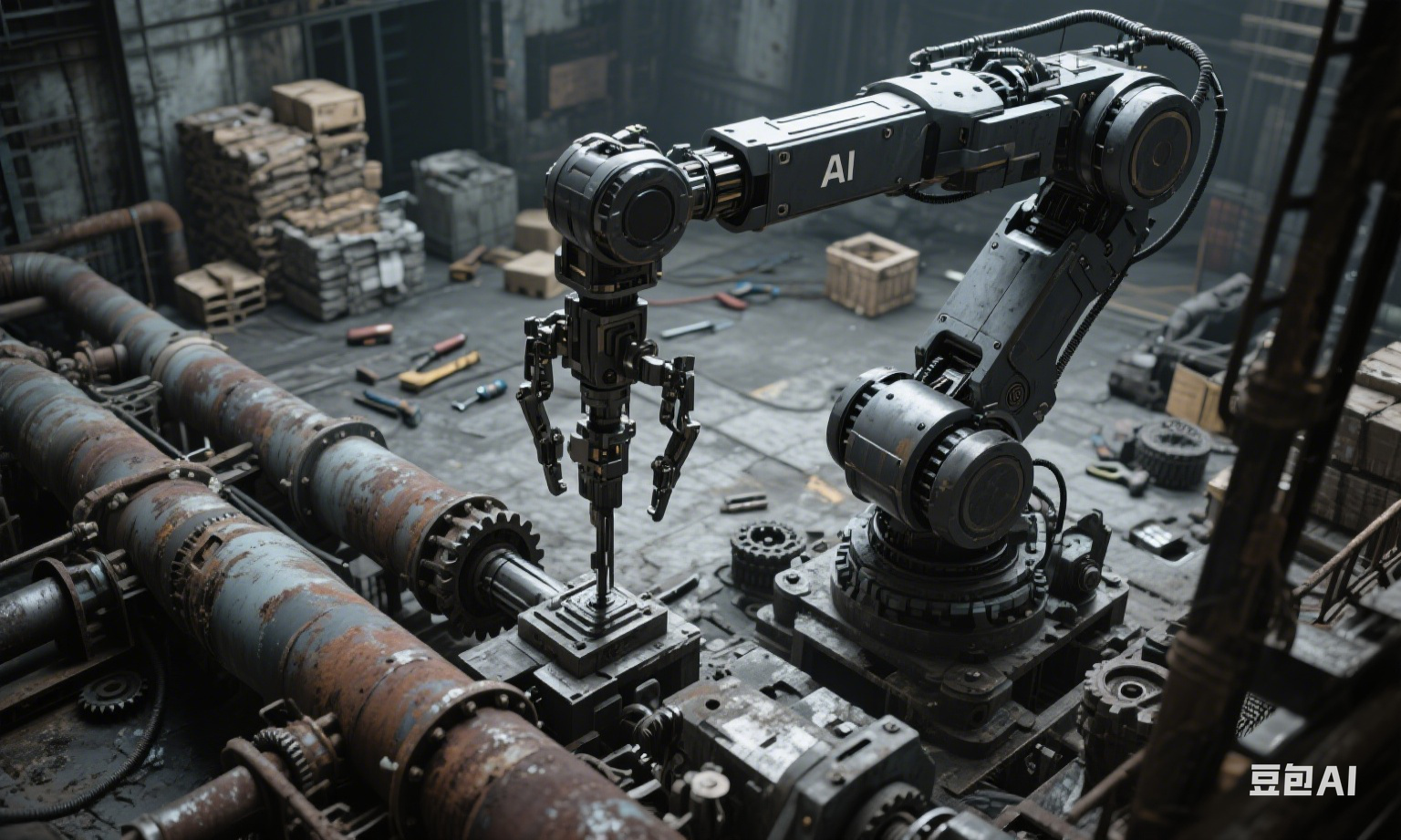AI Agents: Activating the "Second Growth Curve" of Traditional Hardware
王哪跑 2025-06-06
When old air conditioners achieve voice-controlled temperature adjustment and automatic energy optimization through smart module upgrades, and traditional blood pressure monitors predict health risks based on historical data with embedded AI algorithms—the core of these changes is the scenario-based service capabilities that AI agents inject into hardware.
When old air conditioners achieve voice-controlled temperature adjustment and automatic energy optimization through smart module upgrades, and traditional blood pressure monitors predict health risks based on historical data with embedded AI algorithms—the core of these changes is the scenario-based service capabilities that AI agents inject into hardware. Aoyun Cloud Innovation’s Ptalk AI uses a technical combination of "lightweight smart modules + industry-specific algorithms + open empowerment platforms" to help traditional hardware like walkie-talkies, home appliances, and medical devices break through functional boundaries, unlocking a "second growth curve" in consumer electronics, healthcare, and industrial IoT.
1. Lightweight AI Agents: Solving Three Key Challenges in Hardware Intelligence
Traditional hardware intelligence is often limited by size, power consumption, and transformation costs. Ptalk AI’s breakthrough lies in creating a "small yet powerful" intelligent core:
2. Scenario Breakthrough: Evolving from "Function Machines" to "Agent Terminals"
AI agents drive hardware value leaps across industries:
3. Ecosystem Empowerment: Building a "Device-as-Service" Intelligent Network
Ptalk AI is constructing an open ecosystem where every hardware becomes a smart service node:
Conclusion: Redefining Hardware’s "Lifecycle Value"
From button-operated function machines to proactive service agent terminals; from one-time sales hardware products to continuously valuable service nodes—Ptalk AI’s practice reveals: The essence of hardware intelligence is the reconstruction of the value chain. When devices can dynamically adjust service strategies based on user habits, anticipate needs using environmental data, and collaborate with other devices to complete complex tasks, they evolve from "limited-function machines" to "infinite-value agent terminals."
In the era of IoT, Ptalk AI empowers millions of hardware devices through its open ecosystem, enabling every traditional device to break through "functional bottlenecks" and awaken to service capabilities. As the vision of "devices as services" becomes reality, we usher in not just a hardware industry upgrade, but a profound evolution in human-technology relations—no longer devices waiting to be used, but agents proactively delivering services. This may well be the most imaginative future for traditional hardware.
1. Lightweight AI Agents: Solving Three Key Challenges in Hardware Intelligence
Traditional hardware intelligence is often limited by size, power consumption, and transformation costs. Ptalk AI’s breakthrough lies in creating a "small yet powerful" intelligent core:
- Industry's Smallest Interaction Module: The 25mm×45mm fifth-generation module integrates a self-developed noise-canceling chip, maintaining 93% wake-up accuracy in 85dB subway noise with a 0.8-second ultra-fast response, keeping devices perpetually "on service standby." Supporting over 200 offline commands for local operation, it enables smart home appliances to execute basic controls and industrial devices to complete 15 maintenance operations without the cloud, eliminating network dependency.
- 72-Hour Scenario Migration Capability: Dynamic knowledge bases based on large models support rapid cross-industry adaptation, automatically loading user habit data for consumer scenarios (e.g., reducing air conditioner fan speed at night), real-time chronic disease management guidelines for healthcare, and equipment fault maps for industrial scenarios, significantly shortening the intelligence cycle.
- Plug-and-Play Upgrade Solution: Universal Link technology is compatible with 98% of traditional device interfaces, allowing enterprises to transform ordinary home appliances into "smart terminals" within 3 weeks without retooling production lines, reducing R&D costs by 60%. A home appliance brand saw a 40% increase in old device transformation rates and daily user interaction time grow from 1 to 15 minutes after adoption.
2. Scenario Breakthrough: Evolving from "Function Machines" to "Agent Terminals"
AI agents drive hardware value leaps across industries:
- Consumer Electronics: Traditional power sockets become "energy stewards" after installing Ptalk modules, real-time monitoring appliance power consumption, issuing voice reminders like "Refrigerator energy consumption is abnormal, please check the door seal," and generating monthly energy-saving reports, improving household electricity efficiency by 25%. Smart bulbs adjust color temperature based on user schedules (warm white light in the morning, amber light for sleep), increasing device stickiness by 50% through scenario-based services.
- Healthcare: Blood pressure monitors with embedded AI agents evolve beyond data display—issuing proactive voice warnings for three consecutive abnormal readings ("Recommend an additional measurement today") and sending risk alerts to family doctors. Generating personalized health advice based on age and medical history increases proactive monitoring frequency among seniors by 300%.
- Industrial IoT: Traditional sensors upgrade to "equipment health sentinels," real-time collecting vibration and temperature data, precisely locating faults via voice alarms ("No. 3 fan bearing wear exceeds standard by 20%"), reducing fault response time from 30 minutes to 5 minutes. Integrating a 500+ repair solution library provides step-by-step guidance for novice workers’ voice queries, improving maintenance efficiency by 40%.
3. Ecosystem Empowerment: Building a "Device-as-Service" Intelligent Network
Ptalk AI is constructing an open ecosystem where every hardware becomes a smart service node:
- Zero-Code Development Platform: Agent Maker 4.0 allows non-technical users to create exclusive agents in 3 hours via drag-and-drop operations. Small merchants can quickly build "store assistants" (voice broadcasting inventory, recommending promotional products), and factories can develop "production line inspection agents," reducing development costs by 85% compared to traditional methods, with over 2,000 monthly new applications on the platform.
- Multi-Device Collaboration Network: In smart community scenarios, data synchronization among smart water meters, electricity meters, and door locks triggers door lock anomaly alerts and property notifications when no water/electricity usage is detected for 3 hours in senior single-occupancy homes. In enterprise scenarios, smart badges coordinate with printers and conference systems, automating document printing and equipment debugging for employee voice commands like "Prepare customer materials," saving an average of 15 minutes per task.
- Security & Trust System: Federated learning ensures 100% local data processing, with zero upload of user health data in healthcare and bank-level encryption for industrial equipment operation data. Industry-specific content review mechanisms achieve 98.5% service accuracy in consumer scenarios and 99.2% completeness in healthcare risk alerts, ensuring safe and compliant commercial use.
Conclusion: Redefining Hardware’s "Lifecycle Value"
From button-operated function machines to proactive service agent terminals; from one-time sales hardware products to continuously valuable service nodes—Ptalk AI’s practice reveals: The essence of hardware intelligence is the reconstruction of the value chain. When devices can dynamically adjust service strategies based on user habits, anticipate needs using environmental data, and collaborate with other devices to complete complex tasks, they evolve from "limited-function machines" to "infinite-value agent terminals."
In the era of IoT, Ptalk AI empowers millions of hardware devices through its open ecosystem, enabling every traditional device to break through "functional bottlenecks" and awaken to service capabilities. As the vision of "devices as services" becomes reality, we usher in not just a hardware industry upgrade, but a profound evolution in human-technology relations—no longer devices waiting to be used, but agents proactively delivering services. This may well be the most imaginative future for traditional hardware.












